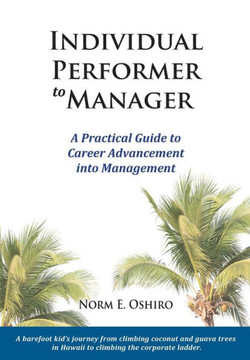
Independently Published
Managing Your Career: A Practical Guide (Management)
Product Code:
9781521375396
ISBN13:
9781521375396
Condition:
New
$10.65

Managing Your Career: A Practical Guide (Management)
$10.65
The world of work has undergone remarkable changes in the recent past. Mergers, offshoring, downsizing, and technology have all come together to effect enormous changes in what were once fairly predictable environments.For example, do you remember when these things were common assumptions about the workplace? Working 9 to 5, operating by the book, and keeping your nose to the grindstone. A hierarchical chain of command was the norm, it was commonly believed that the company knows best, and there was a notion that once people were trained they were forever educated.Well, times have changed and those assumptions are no longer true. Select each statement describing how work used to be to learn how it translates today. The whole notion of what a career is has changed. Having a career used to mean fitting into the ranks of a single profession, industry, or company and moving up one step at a time. The company decided when you were ready to move.Nowadays, the traditional career path still exists, but the notion of what constitutes a career is more fluid and individualistic. The individual decides when it's time to move. And, as a last resort, the next step may even be a job hop to another company.With all of this freedom, however, comes complications. You are responsible for making your own career choices, and it's not always clear which way offers the straightest path toward your goal.For this reason, you need to take stock of where you are now and where you want to be. Then, establish a career plan. Your plan is your personal map that leads you through the confusing and often difficult decisions you need to make in order to achieve your career goals.In this course, the process for creating your career plan will be explained. The first topic will cover how to take an inventory of your values, interests, skills, and lifestyle aspirations. The second topic will help you to identify your strengths and weaknesses. In the third topic, you'll pull it all together and develop a career plan that's based on your individual attributes and what you want to achieve in your career.Think about your career up to this point. Have you drifted along like a passenger in a boat, going wherever the currents of life take you? Or have you taken intentional steps and been proactive about guiding the direction your career path takes?Every so often, you should step back and give some serious thought about whether your career is on track. Are you heading in a direction you're happy with? Are you on a path that will help you reach your goals?If the answer to either of these questions is "no," you should seriously explore your career options. In fact, exploring all potential options is an important part of staying on the right track with your career. So what are your options? Well, you can move up when you're on the right path. Or you can move over when the right path exists elsewhere in your company. Finally, you can move on when your company doesn't offer any path that will help you reach your goals.
| Author: Sorin Dumitrascu |
| Publisher: Independently published |
| Publication Date: May 25, 2017 |
| Number of Pages: 138 pages |
| Language: English |
| Binding: Paperback |
| ISBN-10: 1521375399 |
| ISBN-13: 9781521375396 |





